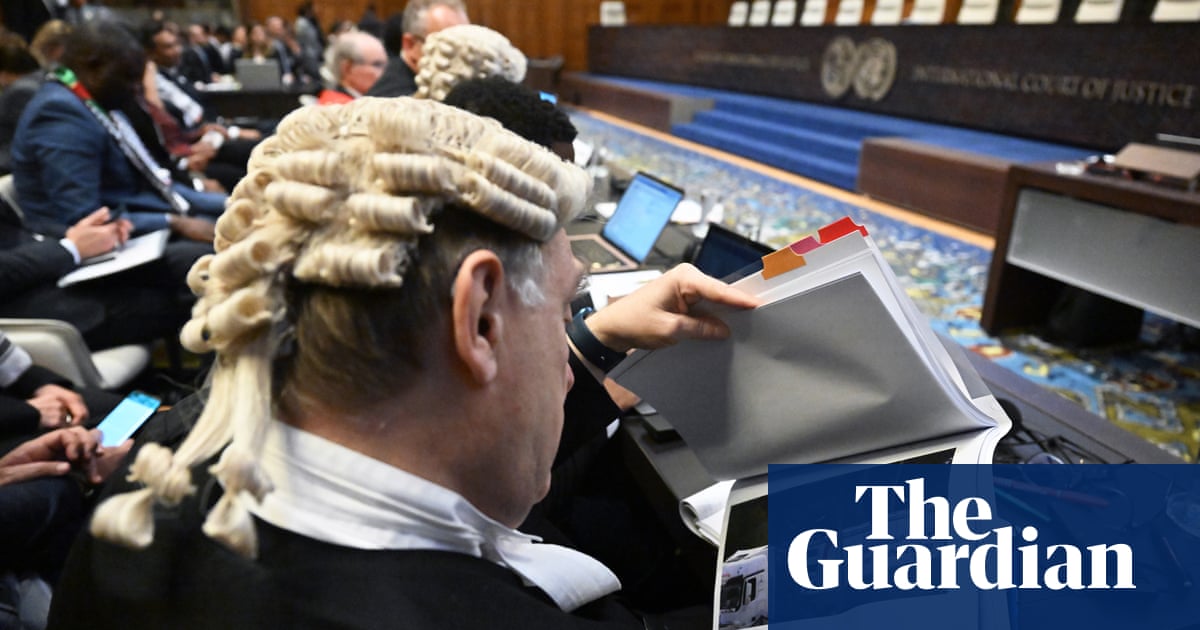
ou probably don’t know you have a social biome – but according to Jeffrey Hall, professor of communication studies at the University of Kansas, you do. Perhaps you’ve heard of the gut microbiome – the unique, diverse ecosystem of bacteria and other microbes that inhabit our gastrointestinal system and which, when balanced, keep us in good digestive health. Well, the social biome, says Hall, is the individual ecosystem of relationships and interactions that shapes our emotional, psychological and physical health. And – thanks to lockdown – it is unlikely to be in good shape.
Hall’s term encompasses the “pattern of your social interactions throughout your days; the who, the what you talk about, and the modalities you use to communicate, from face to face to other means”. The concept has roots, he says, in the idea that social interactions, like food, have “calories” that can make you feel socially nourished. And just as with what you eat, it is not just quantity that matters to health, but variety. Just as you need a mix of food groups on your plate, so you need a mix of modes of communication and types of relationship in your social diet.
In other words a healthy and varied social biome could feature deep and meaningful conversations with your best friend, pleasant small talk with a colleague in the lift, and swapping memes in a WhatsApp group of old school friends. And as with your gut microbiome, Hall says, if you get the balance right, it can “lead to a state of thriving, where you have all your social needs met” – but if the balance is off, you may find yourself lonely, socially malnourished and thirsty for meaningful contact. Sound familiar?
I ask Robin Dunbar, an emeritus professor of evolutionary psychology at the University of Oxford and the author of Friends, what he makes of this idea. “Most psychologists tend to think of the social world as being strictly dyadic,” he tells me – in other words, based on pair relationships. “It’s you and your mum, you and your baby, you and your romantic partner, maybe you and your best friend – but that’s about as far as it goes. It’s a very impoverished view of the social world.” It’s the classic psychologist move, he says – to “simplify everything” so as to “study basic mechanisms”, “shorn of complications”. He could be describing my social life over lockdown here: dyadic (and then, only outdoors), basic, simplified to the point of impoverishment. But, Dunbar reminds me, “these dyadic relationships are all embedded in an ever-extending network called the family, the community, the nation, the globe, which is all highly interconnected”.
This network can bring extraordinary benefits, if we let it. It “creates a kind of enmeshing web within which you are cosseted, and the effects have enormous consequences for our health and wellbeing,” he says. And he cites “a huge torrent – a tsunami, really” of epidemiological papers in the past 15 years, showing that “the best single predictor for your psychological wellbeing and health, for your physical wellbeing and health – even for your risk of dying – is the number and quality of friendships that you have”. A healthy social biome, he suggests, is key to a healthy body and mind.
So what does a healthy social biome look like? Hall and his colleague Andy Merolla mapped the social biomes of nearly 400 people, combing through tens of thousands of interactions, to explore the link between a person’s everyday social exchanges and their sense of wellbeing. Study participants either responded to texts throughout the day asking whether or not they’d had a social interaction in the past 10 minutes, followed by questions about how they felt, or they filled in a survey at the end of the day. This gave the researchers insight into who felt most “socially nourished”. This data formed a mosaic of communication patterns they could then investigate, Hall says, to explore a key question: “Let’s take the most socially nourished people and ask, what do they do? What do their patterns look like?”
Some of what they found was fairly intuitive. Respondents with a higher sense of wellbeing had more frequent and longer interactions, and had meaningful conversations two-and-a-half times more often, than those with the least healthy social biomes. Among those with healthier social biomes, two-thirds of interactions were with close friends and family – in contrast to those with the least healthy, where it was closer to half – and they also had more choice about how and when interactions took place. But that was not the whole story.
“The most surprising result,” Hall says, “the one I still think is really interesting, is that the strongest association with global wellbeing was how people felt when they were alone.” When people replied “no” to the text asking if they’d had a social interaction in the past 10 minutes, and follow-up responses revealed they nevertheless felt good, connected and happy to be alone, it was the most powerful predictor of a healthy social biome.
This shows us, Hall says, that we cannot simply give ourselves a healthy social biome by forcing ourselves to have more and more frequent and longer conversations with our friends and family. “That’s not how healthy people function,” he says. “Alone time is actually a part of a healthy biome.” When we feel sustained by just enough meaningful conversations – even one a day – and by just enough pleasant small talk, then we also feel nourished by time spent alone.
Many of us, in lockdown, have felt anything but socially nourished. Hall says: “It’s critical to understand that we had a huge portion of our social biome straight out removed by the pandemic.” You might live alone and feel socially starved; you might feel you have had so many intense conversations with members of your household that you are craving mild chat about the weather with a stranger in a queue at the post office.
In fact, says Hall, small talk is more nutritious than we think. His communication model, Communicate Bond Belong theory, is based on the idea that we have a limited amount of energy to spend on our social interactions, which makes the “energy-to-connection ratio” important. Easy, quick and friendly moments of contact, such as asking a colleague how their weekend was, or chatting about the traffic with a waiter, can have a powerful impact for the small amount of effort they require, and “tend to be really good for mood regulation,” he says. “Small talk is disparaged as being awful, but in some sense, checking in with another person and letting them know that you’re glad that you’re sharing a space with them is absolutely critical to a sense of community, and to our sense of social nutrition.”
As our national and individual unlocking begins, many of us will be asking ourselves how we want to live differently. “I don’t think there’s any question that this is a huge reset,” says Hall, who feels the social biome could be a helpful way of thinking about how we want to change our social diet. But, I ask him, can we really control our interactions like this? Can we truly perfect our own social biome? “No, we can’t,” he replies. “One of the great paradoxes of human experience is how badly we need other people, but are fundamentally unable to control or make people do what we want them to do. That’s a really tough condition of life.”
A healthy social biome cannot be engineered by us alone, there is no one solution, and it does not come from quick fixes; it has to grow. But we can help to create fertile conditions that will foster that growth, says Hall. “It has to come with an approach of saying, I acknowledge that at this stage in my life I am not as socially connected as I would like to be, so I’m going to take action to do something about that.”
Five tips for improving your social biome
Loneliness is social hunger – feed yourself
Dunbar explains that John Cacioppo, the late social neuroscientist, argued that “loneliness is an evolutionary signal telling us something is not right with your social environment, and you need to do something about it, fast”. If you can understand your loneliness as a kind of hunger you need to feed, then you are in a good position to improve your situation, by phoning a sibling or joining a sports club. But not everybody can do that, Hall says. “In a functional social system, when I feel disconnected, I take action to try to ameliorate that sense of disconnection, and when I do so, I feel satisfied. Unfortunately, when people are chronically lonely, they tend to behave in ways that make their loneliness worse.” Loneliness can make them discount the value of human interaction, assume others wouldn’t want to be around them or be standoffish with people who try to reach out to them. That’s why, Hall says, we cannot blame chronically lonely people for being lonely, and his advice for a healthy social biome may not work for “somebody who feels really, truly alone in this world.”
Don’t forget about Zoom – even if you really, really want to
Just because we can hug when lockdown is over, we shouldn’t stop waving awkwardly on video calls, says Hall. We must take care not to sever connections with those we can only communicate with online, he advises. “Building healthy routines of online contact is critical, whether we’re in the pandemic or not, because we probably don’t have face-to-face opportunities with some of the closest people in our lives.”
Prepare for some social renegotiations
“You’re sitting at the centre of a series of expanding circles of friendship, like ripples on a pond when a stone drops in,” says Dunbar. Just as each ripple is bigger and weaker than the previous one, each circle of friendship grows in size and decreases in the quality of relationship, from your closest loved ones to what he calls the “weddings, barmitzvahs and funerals circle” and beyond. His research showed the size of each of these circles is, frankly, alarmingly consistent – whether it’s in real life or on social media. “You get the same numbers, the same frequencies. You even see it in online gaming environments – exactly the same layers! It’s extraordinary,” he says.
As we emerge from lockdown, Dunbar says, we will probably experience some movement between these circles. “From the moment you don’t see a friend with the frequency you used to, the quality of that relationship starts to decline within a couple of months, by a noticeable measure.” Some of our friendships may have been destabilised. “They’re not quite the same as they were, so when you meet up again, you’ve got to do a bit of renegotiating, because your friend might have found someone else to replace you in the meantime.”
And how on earth are we supposed to cope with such horror? “Well, that’s just part and parcel of normal life,” he says. “We’re doing that all the time. It’s a bit slower for people in middle age, but people in the late teens and early 20s have a turnover of about 30% per year in their friendships.” All we can do is be prepared.
Invite people to things
In order to have more meaningful social contact with people you like, and to have more choice over how and with whom you spend your time, you will need to invite people to things. It may seem obvious, but if you are someone who, before the pandemic, waited to be invited – to coffee, to a party, to a gallery – rather than doing the inviting, this may require a change of mindset. “Inviting people you don’t know well, but who you’d like to know better is a good way to move a relationship along in a positive way,” says Hall. And that won’t just benefit you; you will improve the social biomes of those you interact with, too.
Climb the ladder of communication – when it’s safe
We can think of the different methods of communication available to us as rungs on a ladder, says Hall – and we should prioritise climbing that ladder when it is safe to do so. The lowest rung is browsing social media, and you might want to skip that one, he says. “It’s probably no better in terms of feeling connected than being totally alone, so it’s not serving a social function.” The next rung up is direct messaging a group – sharing memes or news on WhatsApp or Facebook. Then direct messages to people you want to keep in touch with.“When something you’ve just seen reminds you of a friend, text and say: ‘Hey, I was just thinking of you.’ Use your naturally functioning social alert system to direct your behaviour, rather than just forgetting about it,” he says. The next rung is phone calls and video chat – and top of the ladder is face-to-face conversation, the most nourishing of all forms of social contact. And when it finally arrives, how delicious will that be?












